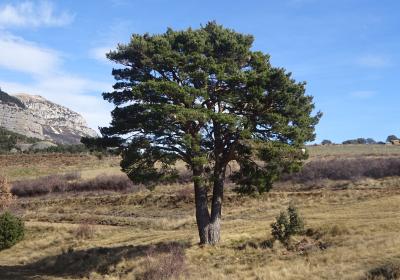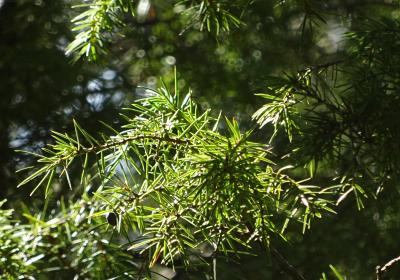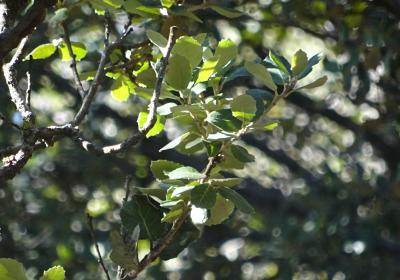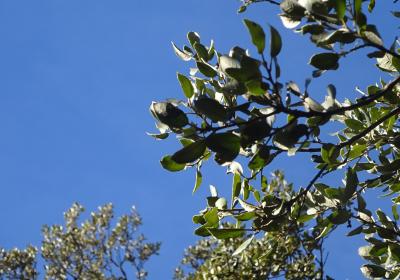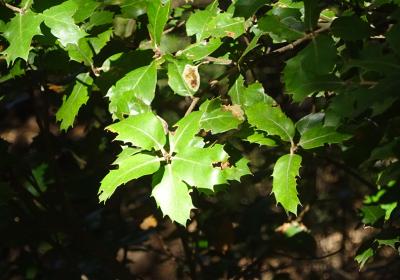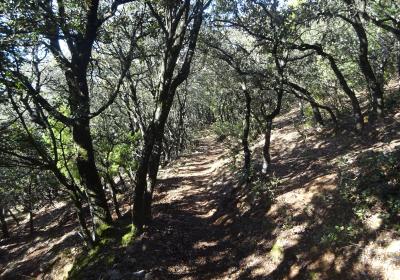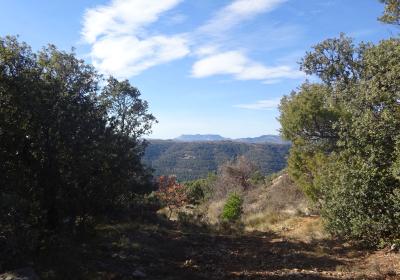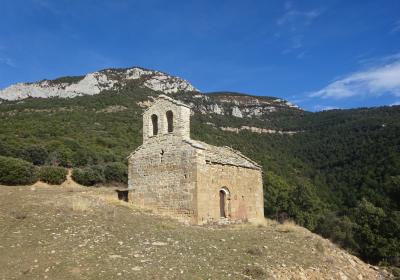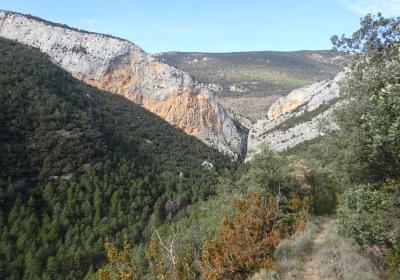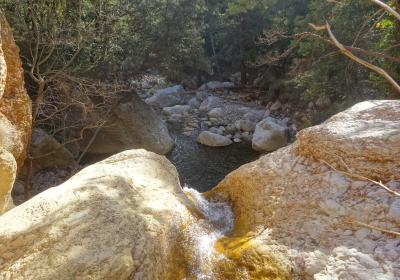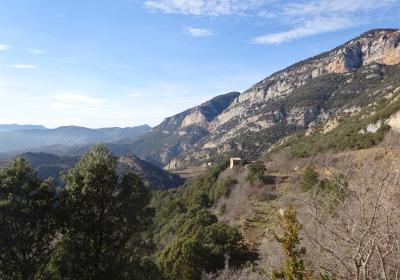This stage can be viewed as the continuation of the previous stage, since it continues along the ridges and streambeds of the southern slopes of Port del Comte and the Odèn range. As you walk, you can take in the austere beauty of the region, comprising forests, cliffs, hermitages and isolated farmhouses, and relish in the Odèn stream, which has a beautiful pond where you can cool off, and its best kept secret, the surprising Estret de Riulacó. Before reaching Cambrils, you will discover the depths of the Fred River, which some say the sun never touches.
Considerable. Derived from the distance and ascent to overcome.
We recommend carrying a pair of binoculars for observing both small and large birds of prey.
Muntanya d'Alinyà - Serra d'Aubenç - Serra de Turp. 1:25.000. Editorial Alpina.
We begin the seventeenth stage of GR 1 near the hermitage of (1) Sant Martí de Cavallera (0:00h - 1.225m). Follow the white and red GR trail markings, descending toward some fields, which you will cross along the edges toward a grove of holm oaks. Continue through the oaks until you reach a track that runs along the ridge, descending toward the streambed, which will take you over the next crest to the Romanesque hermitage of Sant Miquel and the monumental farmhouse of (2) Soler de Dalt (0:35h - 1.087m).
Continue toward the Northeast, passing a watering hole on the left. Careful attention is required at this point: the path you need to take does not lead to the watering hole, but passes just above it. Continue between the abandoned fields where you may easily to come upon a kestrel hovering, looking for a vole to eat. Soon you will be back in the forest, more varied and sub-Mediterranean here. Half hidden amid the vegetation you will see the two cliffs that make up the remote Estret de Riulacó. Descend to the bottom of the valley and cross the riera d'Odèn. Just to your left you will see a lovely mountain pound that can be accessed from the right side of the watercourse. Continue, leaving the path that ascends toward l’Estret on your right. We recommend detouring away from the GR1 for a short while to take a look at this small but spectacular canyon.
Then head up the other slope of the valley in switchbacks, first on a narrow path, then on a track. Finally, you will reach the ridgeline and on the left you will see the (3) Creu de Fontcoberta (1:30h - 1.212m). Continue climbing, passing the cutoff for the path to Odèn on your right. You will come to a paved track and pass alongside the bucolic village of Oriola. You’ll be gaining altitude on the south-facing slope and, just before the track reaches the road, you’ll turn onto a narrow path that drops steeply, squeezed between the forest and the rock face. You’ll arrive at Ribera dels Perxets and climb up a steep hill on the other side. Pass the pond, where wild boar like to cool off, and continue climbing up to the la Garriga ridgeline.
Take the narrow, less defined path along the flank until the next foothill and continue to (4) road number L-401 (2:45h - 1,170m). Follow the road, which will give you a good view of the different crests and streams that run down the mountain toward the deep Fred River. Before reaching kilometer marker 23, take the track that breaks off to the left. Walk along the old mule track that skirts the edges of various crests and streambeds, eventually returning to the road. Pass the peaceful hamlet of Racó, where there are two spectacular waterfalls, just below the Cal Sala farmhouse. The lonely road runs along the final crest and crosses the scree. Finally we arrive in (5) Cambrils (4:00h - 1.081m), the endpoint of the seventeenth stage.
The possibility of observing large and small birds of prey, such as the griffon vulture, the golden eagle, the red kite, the peregrine falcon, or the common kestrel.
The lovely medieval site of Odèn, consisting of the Romanesque church of Santa Cecília and the ruins of the castle of Odèn.
Discover the hidden and spectacular Estret de Riulacó, a small canyon that will leave you breathless.
Delve into the shadowy depths of the Fred River, the striking headwaters of the Ribera Salada.
The Protected Natural Area of Serres d'Odèn-Port del Comte constitutes one of the southernmost borders of the Catalan alpine landscape? In these mountains with clay soils, we find forests of mountain pine, one of the southernmost populations of wood grouse, martens and a considerable number of Pyrenean chamoi
Visiting the Salí de Cambrils, located along the Fred River. Although we know that salt was mined there in the Middle Ages for local use, it was not until the 18th century that the exploitation of the salt works was industrialized. It is very interesting to tour the terraces where the water evaporates, leaving behind small piles of salt on the ground. Guided tours can be arranged. (For more information, see: www.salidecambrils.cat)
Care should be taken to avoid heatstroke and dehydration if travelling along this stage in the peak of summer.

